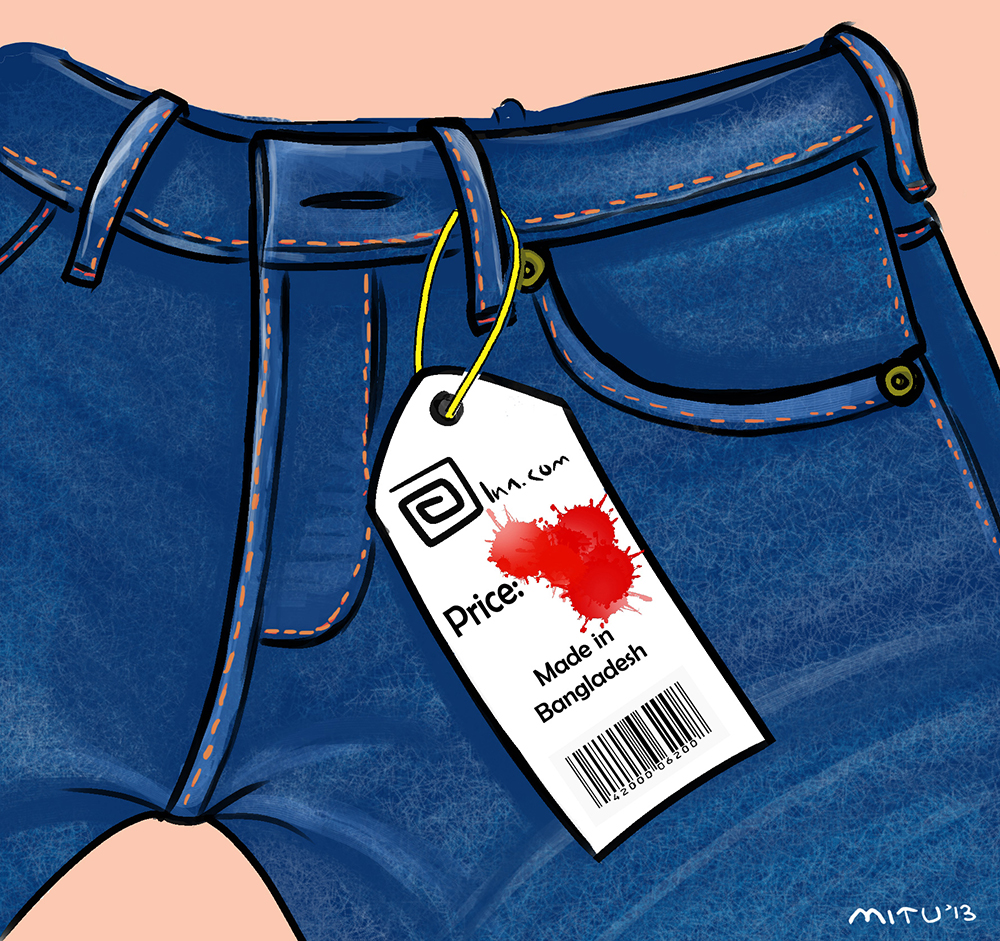Don’t paint all clothing companies with the same brush

© Mahadi
By Nandita Farhad
The collapse of a factory in Bangladesh a month ago killed more than 1,100 textile workers, mostly young women, and fuelled an already strong hostility towards the appalling working conditions. But the debate should be more nuanced, and good initiatives should be recognized. Nandita Farhad The number of fatalities in the clothing industry in Bangladesh was already alarmingly high before the fatal factory collapse in Savar, on the outskirts of Dhaka, on 24 April. The garment factories also create jobs for women from the countryside, giving them economic independence and a stronger position in society. It is a quiet social revolution, says Nandita Farhad, a former international student who is now programme assistant in Business Administration at Linköping University. In an article that was published before the disaster she asserts that over 700 textile have been killed since 2006, most of them in fires. But the real fatality figures may be even higher than is officially reported, she writes, referring to a group of social anthropologists in Bangladesh who have demonstrated this. Bangladesh is currently responsible for a large part of the world’s clothing production. Nowhere else clothes are produced as cheaply as here. The country is hugely dependent on this sector, which provides nearly four million jobs. The multinational companies, of which H&M is one of the biggest, are supposed to live up to their own ethical codes, but they have great difficulties in keeping track of every link in the ever more complex supplier chains, says Farhad. “To say that every company is bad is a seriously erroneous generalisation. The key thing is to be clear on what is really happening and to highlight the good initiatives that are being taken. In particular, the supplier chains need to be made transparent and analysed in order to get to the basic reasons for the problems of worker health and safety.” In 2012 a number of companies, including Tommy Hilfiger, Calvin Klein and Tchibo, signed the Bangladesh Fire and Building Safety Agreement. But the Savar disaster still happened this year. More companies have now signed, among them H&M. “But it’s not enough just to sign a document,” Farhad says. “Now the supplier chain must be monitored if the agreement is to become reality.” During her master’s she studied migrant workers in the construction industry in Qatar. Then she saw how difficult it is for the multinational companies to keep track of the conditions of their workers. They came from many different countries and were often hired by a long series of different staffing companies. “Those who were employed directly by the multinational companies they were working for usually had better conditions than those working for companies who don’t themselves recruit. There could be a wage difference of up to 20 %.” She also points to the dispute over responsibility between the government and the companies. Both want to pass the buck to the other. The companies want the government to increase the statutory minimum wage for textile workers – which is going to happen again now. (They were last increased in 2010). The government blames the companies for paying too poorly and for bad safety standards in the factories. Boycotting clothes from Bangladesh, or to toughen export conditions as the EU now threatens, is not something she sees as a solution. That would just throw the country into an economic crisis and make the poor even poorer. Back